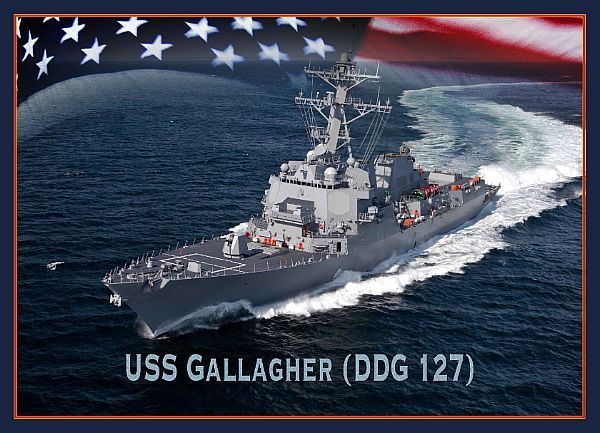And now for putting the ship all together.
The keel laying for the future USS Patrick Gallagher will take place on March 30, the 55th anniversary of the death of the County Mayo-born and U.S. Marine Corps hero.
The keel laying will take place at the Bath Iron Works shipyard in Maine and members of the Gallagher family in Ireland are planning on attending.
Laying the keel is the formal recognition of the start of a ship's construction and is followed by the launch and commissioning.
Patrick Gallagher arrived in the U.S. from Ballyhaunis, County Mayo in 1962 and later joined the Marine Corps where he served in H-Company, 2nd Battalion, 4th Marine Regiment, 3rd Marine Division during Operation Hastings in South Vietnam.
Gallagher was awarded the Navy Cross for his actions on July 18, 1966, when he "selflessly threw his body on an incoming grenade," shielding his fellow Marines.
According to the Navy account Gallagher "quickly pitched the grenade to a nearby river where it safely exploded out of harm's way, without injury to himself or others."
Gallagher was killed in action just before the end of his tour, in DaLoc near Da Nang on March 30, 1967. He is one of 30 known Irish citizens to have died in the Vietnam conflict.
After a lengthy campaign, significantly supported by New York Senator Charles Schumer, the Navy, in 2018, was persuaded to name an Arleigh Burke Class destroyer after Gallagher. The USS Gallagher will be the last ship in the Arleigh Burke Class.
Said the navy at that time: “The future USS Gallagher (DDG 127) will be capable of fighting air, surface and subsurface battles simultaneously, and will contain a combination of offensive and defensive weapon systems designed to support maritime warfare, including integrated air and missile defense and vertical launch capabilities.
“The ship will be constructed at Bath Iron Works, a division of General Dynamics in Maine. The ship will be 509 feet long, have a beam length of 59 feet and be capable of operating at speeds in excess of 30 knots.”
The actual construction of the Gallagher following the keel laying should be quite a relatively rapid process as modern ships are largely pieced together with pre-constructed sections and modules.









